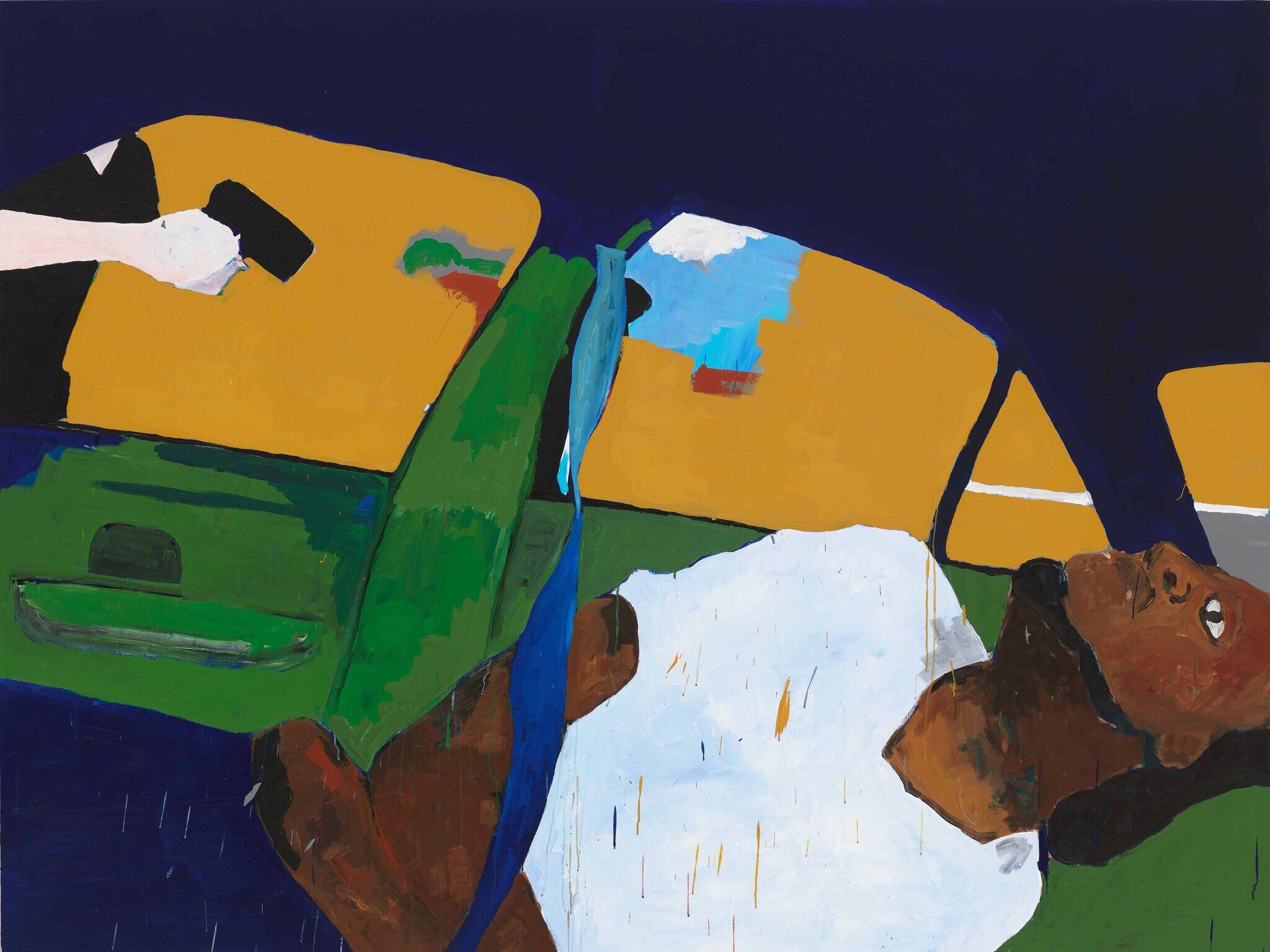Henry Taylor: B Side | Art & Artists
Oct 4, 2023–Jan 28, 2024
Henry Taylor: B Side | Art & Artists
Resting
3
Within Taylor's broad range of subjects are works that delve into political and social allegory and current events. In some, he addresses police brutality in ways that can be terrifyingly direct but also tender. Several paintings memorialize young men murdered by the police and reference the US penal system through images of prison walls, guard towers, and citizens with their hands up. In others, he packs images and text into surreal compositions whose elusive meanings comingle reportage, personal memory, and common outrage. Together, these works extend a long tradition of socially charged history paintings. As with Francisco Goya's The Third of May 1808 (1814), which Taylor cites as a precedent, the emotional message is one of horror and grief.
Henry Taylor, THE TIMES THAY AINT A CHANGING, FAST ENOUGH!, 2017
This painting, which depicts the 2016 police killing of Philando Castile during a traffic stop outside Minneapolis, places the viewer in the position of Castile’s girlfriend, Diamond Reynolds, who livestreamed the aftermath of Castile being shot from her cell phone as she sat next to him in the car. Taylor has said that he was motivated to paint this scene immediately upon learning about it—“I don’t even think I thought about ever showing that one when I painted it; it was just something I had to get out of my head.” Taylor’s title, a reversal of the well-known Bob Dylan lyric, visually laments the far-too-common deadly interactions between Black Americans and law enforcement. In depicting the last moments of Castile’s life, Taylor draws on familiar art-historical precedents, such as Jacques-Louis David’s The Death of Marat (1793) and deposition paintings of Christ.

